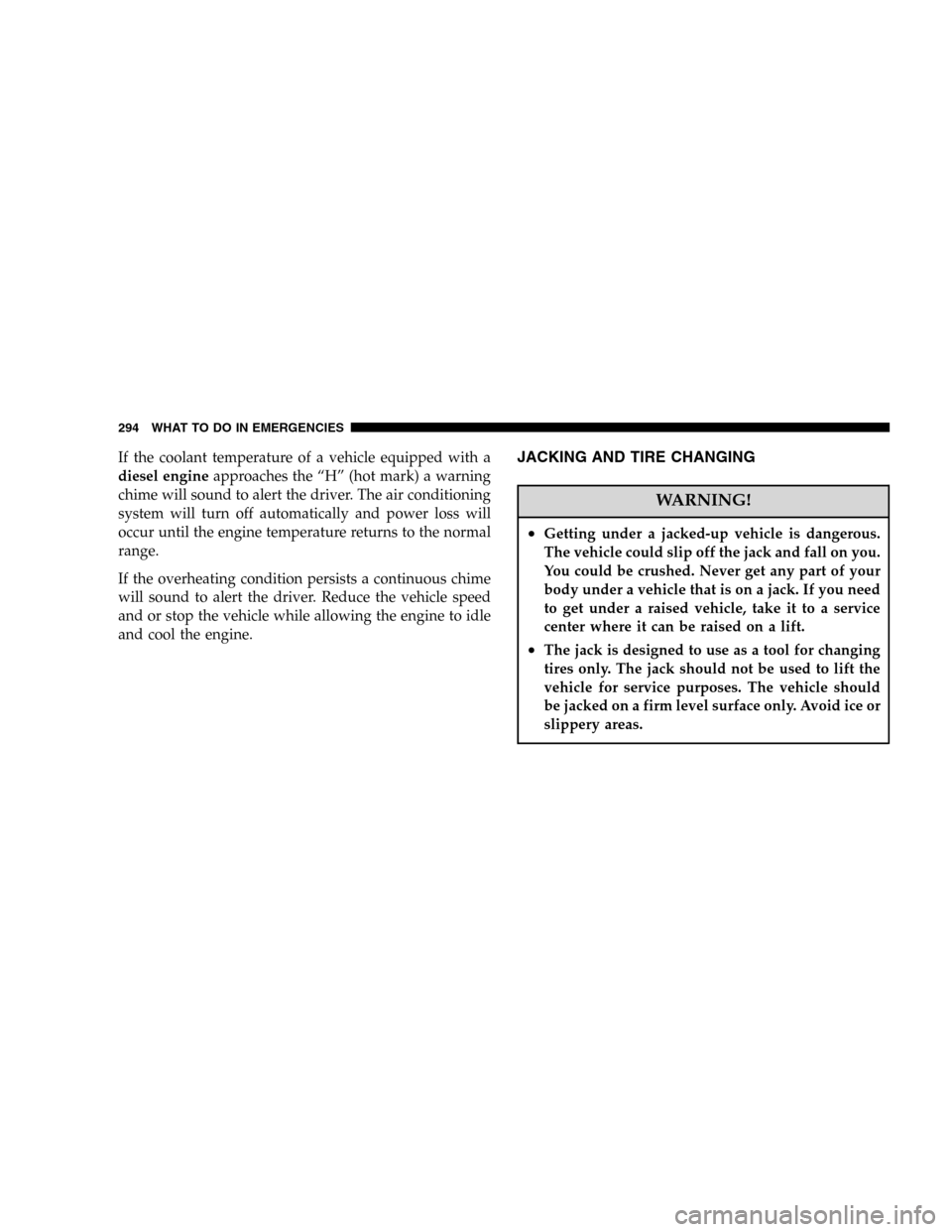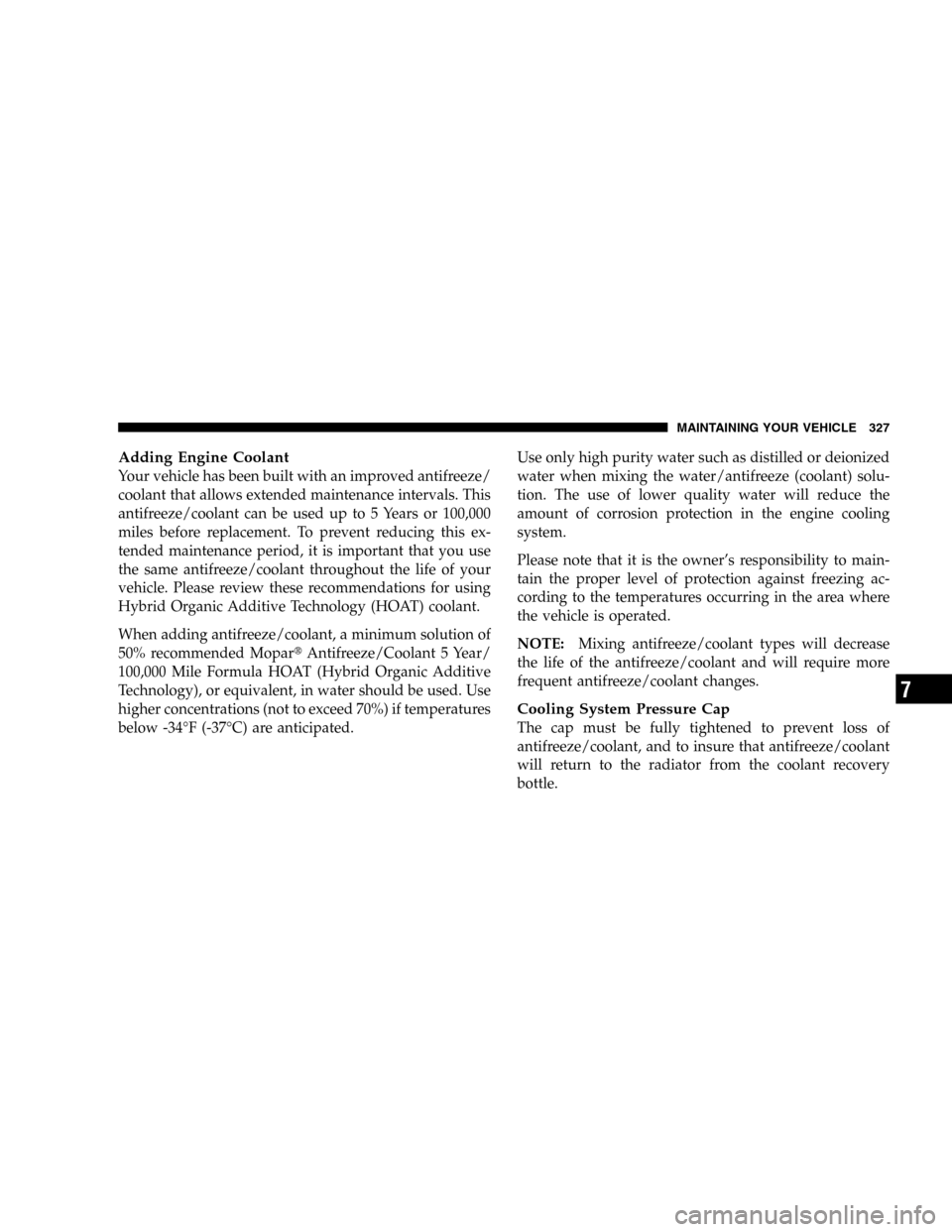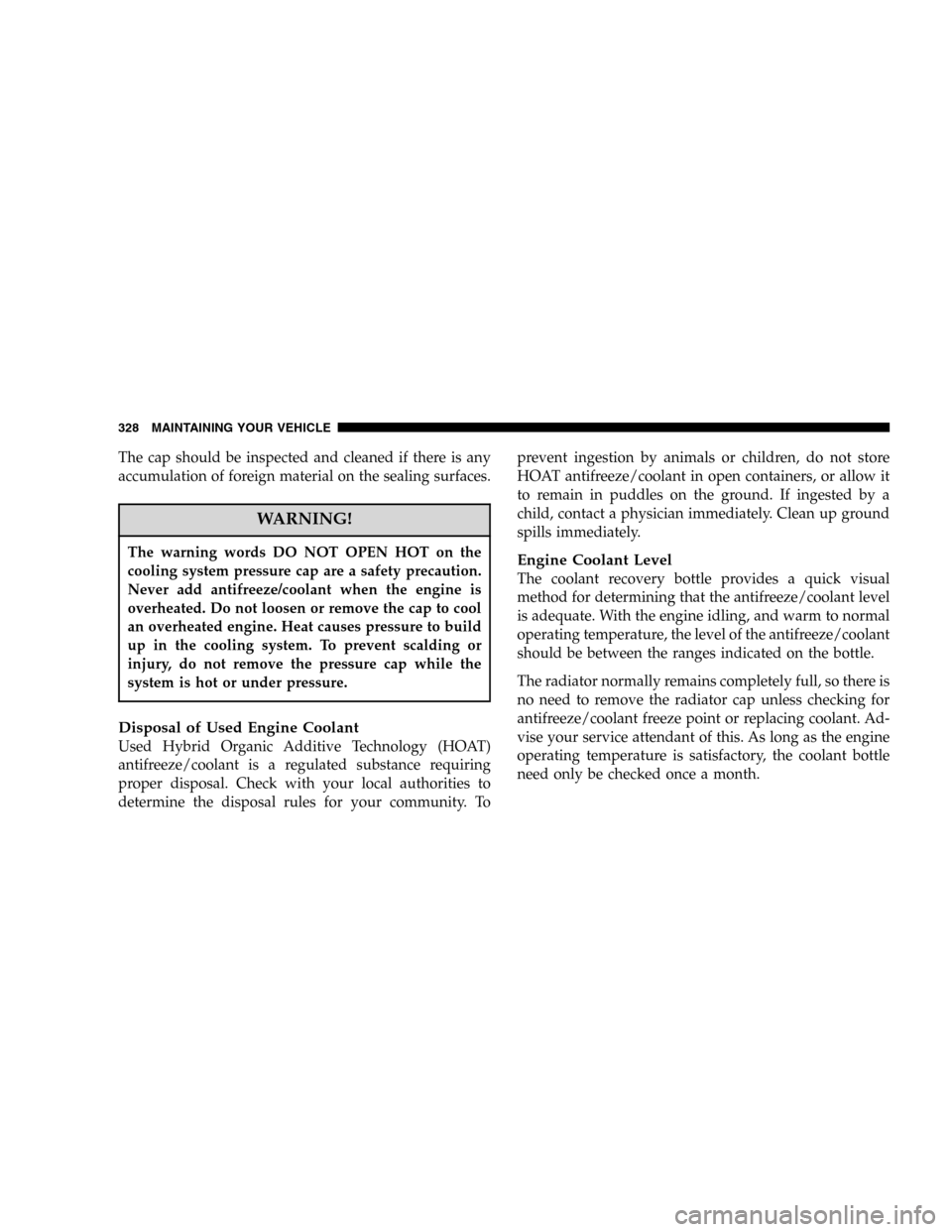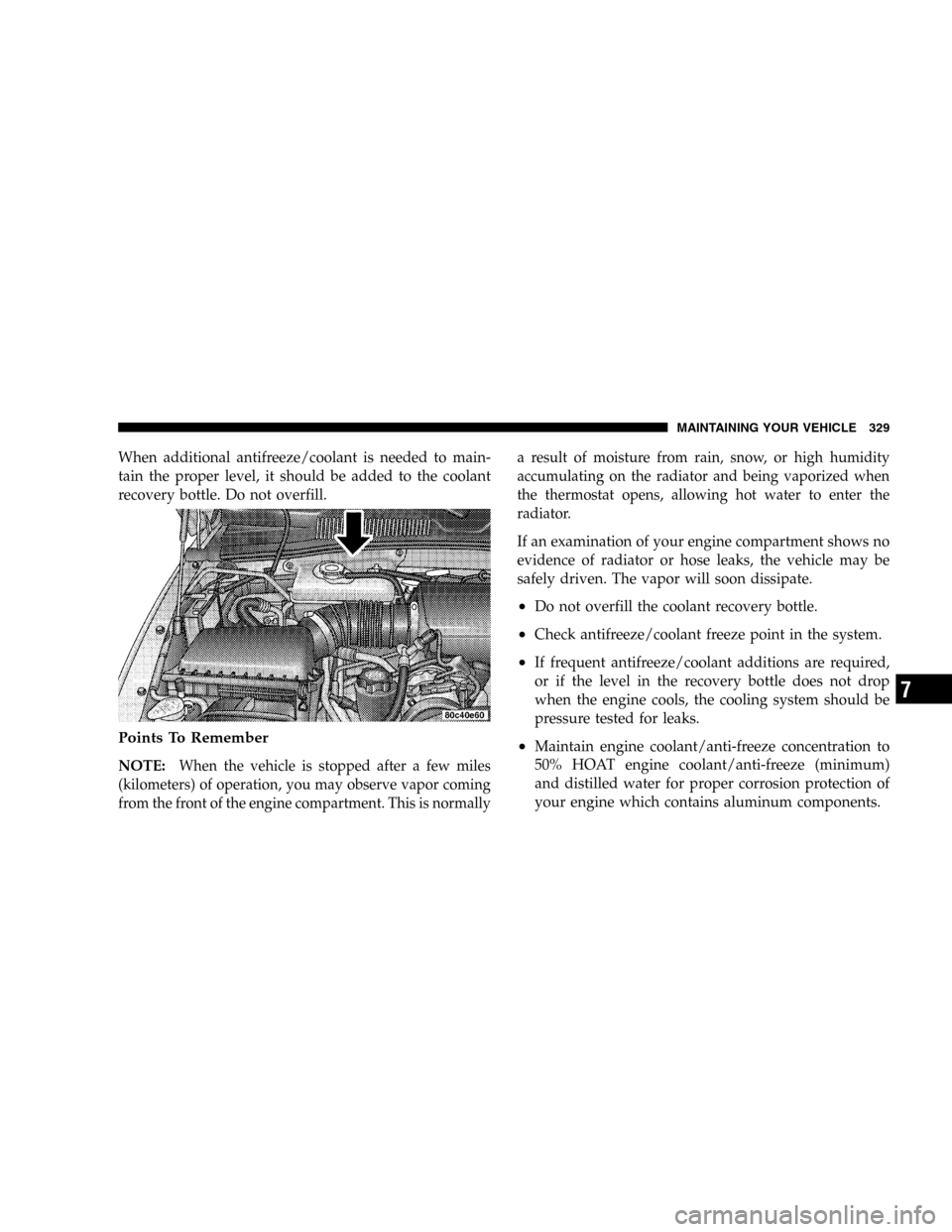Page 175 of 424

24. O/D (Overdrive) Off Indicator Light
This light will illuminate when the O/D OFF
button has been selected. The O/D OFF button is
located on the gear shift lever.
25. Seat Belt Indicator Light
When the ignition switch is first turned ON, this
light will turn on for 5 to 8 seconds as a bulb check.
During the bulb check, if the driver’s seat belt is
unbuckled, a chime will sound. After the bulb check or
when driving, if the driver seat belt remains unbuckled,
the Seat Belt Warning Light will flash or remain on
continuously. Refer to�Enhanced Driver Seat Belt Re-
minder System (BeltAlert)�in the Occupant Restraints
section for more information.
26. Light Bar Indicator Light — If Equipped
This light indicates when the light bar lamps
are on.27. Water In Fuel Warning Light — If Equipped
This light indicates water has collected in the
fuel filter and should be drained immediately.
See your authorized dealer for service. (See
page 220 for more information.)
28. Low Coolant Warning Light — If Equipped
This light comes on if the coolant level is low.
This light will come on for 3 seconds as a bulb
check when the ignition switch is first turned
to the ON position.
29. Electronic Throttle Control (ETC) Warning Light —
If Equipped
This light informs you of a problem with the
Electronic Throttle Control system. If a problem
is detected the light will come on while the
engine is running. Cycle the ignition key when
the vehicle has completely stopped and the gear selector
is placed in the P (Park) position. The light should turn
UNDERSTANDING YOUR INSTRUMENT PANEL 175
4
Page 294 of 424

If the coolant temperature of a vehicle equipped with a
diesel engineapproaches the “H” (hot mark) a warning
chime will sound to alert the driver. The air conditioning
system will turn off automatically and power loss will
occur until the engine temperature returns to the normal
range.
If the overheating condition persists a continuous chime
will sound to alert the driver. Reduce the vehicle speed
and or stop the vehicle while allowing the engine to idle
and cool the engine.JACKING AND TIRE CHANGING
WARNING!
•Getting under a jacked-up vehicle is dangerous.
The vehicle could slip off the jack and fall on you.
You could be crushed. Never get any part of your
body under a vehicle that is on a jack. If you need
to get under a raised vehicle, take it to a service
center where it can be raised on a lift.
•The jack is designed to use as a tool for changing
tires only. The jack should not be used to lift the
vehicle for service purposes. The vehicle should
be jacked on a firm level surface only. Avoid ice or
slippery areas.
294 WHAT TO DO IN EMERGENCIES
Page 324 of 424
Windshield Washers
The fluid reservoir for the windshield washers and the
rear window washer is shared. It is located in the front of
the engine compartment on the passenger side and
should be checked for fluid level at regular intervals. Fillthe reservoir with windshield washer solvent (not
antifreeze/coolant) and operate the system for a few
seconds to flush out the residual water.
WARNING!
Commercial windshield washer solvents are flam-
mable. They could ignite and burn you. Care must
be exercised when filling or working around the
washer solution.
Exhaust System
The best protection against carbon monoxide entry into
the vehicle body is a properly maintained engine exhaust
system.
If you notice a change in the sound of the exhaust system;
or if the exhaust fumes can be detected inside the vehicle;
or when the underside or rear of the vehicle is damaged;
324 MAINTAINING YOUR VEHICLE
Page 327 of 424

Adding Engine Coolant
Your vehicle has been built with an improved antifreeze/
coolant that allows extended maintenance intervals. This
antifreeze/coolant can be used up to 5 Years or 100,000
miles before replacement. To prevent reducing this ex-
tended maintenance period, it is important that you use
the same antifreeze/coolant throughout the life of your
vehicle. Please review these recommendations for using
Hybrid Organic Additive Technology (HOAT) coolant.
When adding antifreeze/coolant, a minimum solution of
50% recommended Mopar�Antifreeze/Coolant 5 Year/
100,000 Mile Formula HOAT (Hybrid Organic Additive
Technology), or equivalent, in water should be used. Use
higher concentrations (not to exceed 70%) if temperatures
below -34°F (-37°C) are anticipated.Use only high purity water such as distilled or deionized
water when mixing the water/antifreeze (coolant) solu-
tion. The use of lower quality water will reduce the
amount of corrosion protection in the engine cooling
system.
Please note that it is the owner’s responsibility to main-
tain the proper level of protection against freezing ac-
cording to the temperatures occurring in the area where
the vehicle is operated.
NOTE:Mixing antifreeze/coolant types will decrease
the life of the antifreeze/coolant and will require more
frequent antifreeze/coolant changes.
Cooling System Pressure Cap
The cap must be fully tightened to prevent loss of
antifreeze/coolant, and to insure that antifreeze/coolant
will return to the radiator from the coolant recovery
bottle.
MAINTAINING YOUR VEHICLE 327
7
Page 328 of 424

The cap should be inspected and cleaned if there is any
accumulation of foreign material on the sealing surfaces.
WARNING!
The warning words DO NOT OPEN HOT on the
cooling system pressure cap are a safety precaution.
Never add antifreeze/coolant when the engine is
overheated. Do not loosen or remove the cap to cool
an overheated engine. Heat causes pressure to build
up in the cooling system. To prevent scalding or
injury, do not remove the pressure cap while the
system is hot or under pressure.
Disposal of Used Engine Coolant
Used Hybrid Organic Additive Technology (HOAT)
antifreeze/coolant is a regulated substance requiring
proper disposal. Check with your local authorities to
determine the disposal rules for your community. Toprevent ingestion by animals or children, do not store
HOAT antifreeze/coolant in open containers, or allow it
to remain in puddles on the ground. If ingested by a
child, contact a physician immediately. Clean up ground
spills immediately.
Engine Coolant Level
The coolant recovery bottle provides a quick visual
method for determining that the antifreeze/coolant level
is adequate. With the engine idling, and warm to normal
operating temperature, the level of the antifreeze/coolant
should be between the ranges indicated on the bottle.
The radiator normally remains completely full, so there is
no need to remove the radiator cap unless checking for
antifreeze/coolant freeze point or replacing coolant. Ad-
vise your service attendant of this. As long as the engine
operating temperature is satisfactory, the coolant bottle
need only be checked once a month.
328 MAINTAINING YOUR VEHICLE
Page 329 of 424

When additional antifreeze/coolant is needed to main-
tain the proper level, it should be added to the coolant
recovery bottle. Do not overfill.
Points To Remember
NOTE:When the vehicle is stopped after a few miles
(kilometers) of operation, you may observe vapor coming
from the front of the engine compartment. This is normallya result of moisture from rain, snow, or high humidity
accumulating on the radiator and being vaporized when
the thermostat opens, allowing hot water to enter the
radiator.
If an examination of your engine compartment shows no
evidence of radiator or hose leaks, the vehicle may be
safely driven. The vapor will soon dissipate.
•Do not overfill the coolant recovery bottle.
•Check antifreeze/coolant freeze point in the system.
•If frequent antifreeze/coolant additions are required,
or if the level in the recovery bottle does not drop
when the engine cools, the cooling system should be
pressure tested for leaks.
•Maintain engine coolant/anti-freeze concentration to
50% HOAT engine coolant/anti-freeze (minimum)
and distilled water for proper corrosion protection of
your engine which contains aluminum components.
MAINTAINING YOUR VEHICLE 329
7
Page 356 of 424
FLUID CAPACITIES
U.S. Metric
Fuel (Approximate)20.5 Gallons 78 Liters
Engine Oil with Filter
2.4/3.7 Liter Engines (SAE 5W-30, API Certified Engine Oil) 5 Qts 4.7 Liters
2.8 Liter Diesel Engine (SAE 0W-40 Mobil 1�Synthetic, API
Certified Engine Oil)6.4 Qts 6.1 Liters
Cooling System *
2.4 Liter Engine (Mopar�Antifreeze/Coolant 5 Year/100,000
Mile Formula)10 Qts 9.5 Liters
3.7 Liter Engine (Mopar�Antifreeze/Coolant 5 Year/100,000
Mile Formula)14 Qts 13.2 Liters
2.8 Liter Diesel Engine (Mopar�Antifreeze/Coolant 5 Year/
100,000 Mile Formula)11.8 Qts 12.5 Liters
* Includes heater and coolant recovery bottle filled to MAX level.
356 MAINTAINING YOUR VEHICLE
Page 362 of 424

At Each Stop for Fuel
•Check the engine oil level about 5 minutes after a fully
warmed engine is shut off. Checking the oil level while
the vehicle is on level ground will improve the accu-
racy of the oil level reading. Add oil only when the
level is at or below the ADD or MIN mark.
•Check the windshield washer solvent, add as required.
Once a Month
•Check the tire pressure and look for unusual wear or
damage.
•Inspect the battery, and clean and tighten the terminals
as required.
•Check the fluid levels of the engine coolant/anti-
freeze reservoir, brake master cylinder, and transmis-
sion, and add as needed.
•Check all lights and all other electrical items for correct
operation.
At Each Oil Change
•Change the engine oil filter.
•Inspect the exhaust system.
•Inspect brake hoses.
•Check the engine coolant/anti-freeze level, hoses, and
clamps.
•Inspect manual transmission fluid level, and for leaks
(if equipped).
•After completion of off-road operation, the underside
of the vehicle should be thoroughly inspected. Exam-
ine threaded fasteners for looseness.
362 MAINTENANCE SCHEDULES
8
M
A
I
N
T
E
N
A
N
C
E
S
C
H
E
D
U
L
E
S